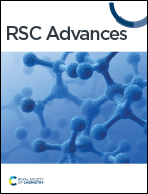The curious case of the crystalline tri-thorium cluster: cyclic delocalization without aromatic stabilization?
Abstract
Actinides have been known to form extremely weak homonuclear bonds with their d-type orbitals, and one should therefore expect the superposition of cyclic resonance forms containing such bonds to bring rather marginal aromatic stabilization to the system, if any. It is for this very reason that the discovery of the cyclically delocalized Th3 σ-bonding in the crystalline cluster isolated by Liddle and co-workers has sparked such vigorous discussion on the actual role of molecular aromaticity on the periphery of the periodic table. It has recently been argued that the tri-thorium ring at the heart of the cluster features considerable aromatic stabilization energy comparable to the heterocyclic π-aromatic rings such as thiophene. However, previous investigations involved highly ionized model clusters like Th3Cl64+ or Th310+ in which aromatic stabilization associated with the cyclic delocalization of charge is dramatically exaggerated. In this work we investigate the model tri-thorium clusters at different geometries and ionization states to show that cyclic delocalization of electrons in the isolated crystalline cluster may be associated with rather marginal σ-aromatic stabilization energy thus strongly suggesting its non-aromatic character.



 Please wait while we load your content...
Please wait while we load your content...